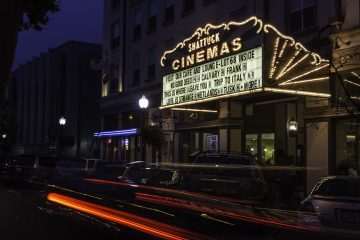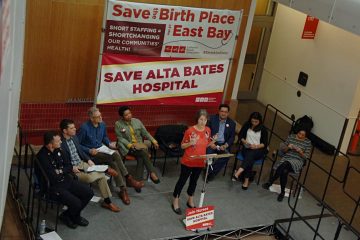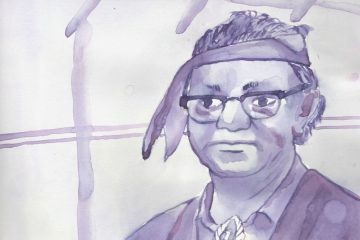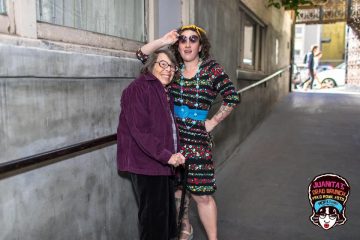The Rarely Told Story of the East Bay Blues

Image of Mississippi Johnny Waters at Home in Oakland. Photo by Michelle Vignes
By Chris DeJohn
Mississippi, Chicago, Texas, Kansas City, and even Louisiana enjoy more association with the blues than the West Coast — but the art form holds a long, deep history in Oakland, California.
Legendary singer, songwriter, guitarist and former long-time proprietor of The Boom Boom Room in San Francisco, John Lee Hooker, spent a large amount of time nurturing his career in Russell City — an unincorporated township in Hayward where many African Americans landed after migrating to the Bay Area, following World War II.
With a steady stream of blues musicians coming through, Russell City was considered a proving ground for the blues during the ‘40s and ‘50s — and although the township was eventually destroyed in 1964 to make way for an industrial park — and is now the West Winton Avenue area of Hayward — it is still considered the birthplace of the West Coast blues sound.
The blues was originally born from Old English hymns given to West African slaves laboring on plantations in the South, so they could “have religion.” The slaves would rearrange the hymns by elongating the notes and adding a call-and-response element, which — according to the West Coast Blues Society — “gave rhythm to the drudgery of their servitude.” These new rhythms laid the foundation for modern blues.
As freed slaves eventually migrated out West, the blues not only followed, but without its influence we wouldn’t have jazz, rock & roll, gospel or pop. Artists like The Rolling Stones, Lady Gaga, Green Day, Michael Jackson, Nirvana, Prince, The White Stripes — the list goes on and on — would have never existed without the blues.
Today — blues historian, preservationist, and executive director for The West Coast Blues Society, Ronnie Stewart, keeps the East Bay blues tradition alive by hosting the Hayward-Russell City Blues Festival every year in July.
“I saw a need for a place for artists who never really made a big name for themselves,” Stewart said. “And I want to perpetuate the history.”
He’s founder of “The Music They Played on 7th Street Walk of Fame,” which is a tribute to the unsung Oakland blues musicians who invented the pensive, melancholic 1-4-5 progressions paramount to the Oakland blues sound.
Seventh Street in Oakland played a huge role in perpetuating the blues in the 1950s. Aretha Franklin and Billie Holiday even cut their teeth on Oakland’s 7th Street scene circa 1957, which was then known as “The Harlem of the West Coast.”
The infamous East Bay thoroughfare was a thriving center for African American culture, and was home to many hole-in-the-wall clubs featuring the blues. Reed Record Shop was THE place to purchase recordings, and the world famous Slim Jenkins Supper Club was the premiere venue. But by the mid 1960s all that was gone, thanks to the construction of the 7th Street BART.
According to Stewart — who at the time played guitar with artists like Jimmy McCracklin, Charles Brown, and Big Momma Thornton — the noise from the BART trains speeding close by would “rattle the doors and windows” on all the clubs, which eventually had to shut down and board up, ending the 7th Street scene in what Stewart calls “cultural genocide.”
“Instead of presenting it as an African American art form, they’re trying to kill the blues” Stewart said. “This is our culture. We need to make sure young people understand the history of this art form.”
Hip-hop and electronic dance music DJs, along with psychedelic jam bands like The Grateful Dead (and all their recent iterations) enjoy reverence in the Bay Area these days, while the music that actually spawned the genre — the blues — remains surprisingly elusive.
Stewart says the only real blues club left in the Bay Area is Biscuits and Blues, which presents national and regional acts in San Francisco. And while it’s not technically a music venue, you can catch Stewart singing and playing guitar every Saturday night at Everett and Jones BBQ in Oakland.
The Saloon — the oldest bar in San Francisco — regularly hosts local blues acts you can check out for a cheap two-drink minimum. The Condor, which was previously a burlesque venue, now features the blues and generally boasts free admission to shows. Tupelo in North Beach holds local blues shows with no cover as well, and Levy Studio in San Francisco occasionally offer blues shows for a nominal ticket price.
While noodling, psychedelic jam-band guitars and impersonal electronics may currently overshadow the blues in the Bay Area — it’s not that hard to find — if you know where to look.












